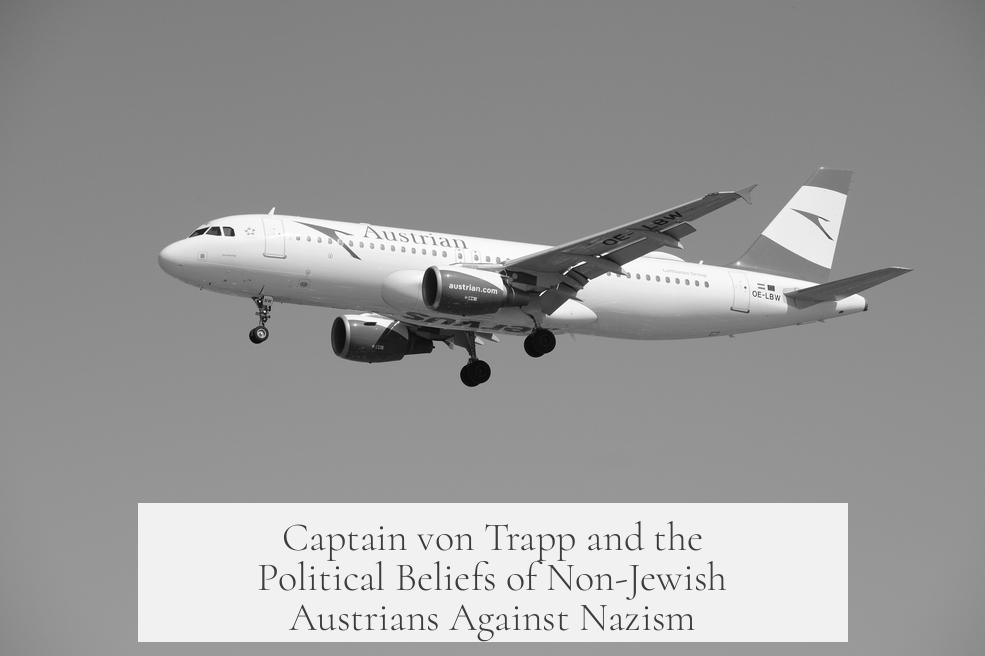The historical Captain von Trapp was a supporter of Austrofascism, a fascist political movement in Austria during the 1930s. Although he opposed Nazism and the Anschluss, von Trapp aligned with a regime that shared many authoritarian and anti-democratic traits with Italian Fascism and other contemporary fascist movements.
Captain von Trapp backed the Austrofascist government led by Engelbert Dollfuß and later Kurt Schuschnigg. This regime rejected both liberal democracy and socialism, promoting a “third way” based on corporatism inspired by Catholic social teaching. Under Austrofascism, society was organized into chambers representing various economic sectors where class conflict would be mediated without abolishing private property. The regime prioritized Austrian nationalism and fiercely opposed Nazi unification efforts, but its authoritarian and violent methods resembled those of fascist regimes elsewhere.
Von Trapp was a member of the Heimwehr, the armed wing that upheld Austrofascism’s repressive policies. The Heimwehr and police forces launched campaigns of arrests against political opponents. In 1934, conflict escalated dramatically when the Austrofascists shelled Viennese apartment blocks where Social Democrats had barricaded themselves. This attack killed over a hundred civilians, including women and children. The event underscored Austrofascism’s brutal suppression of political dissent and its anti-social democratic stance.
The Austrofascists targeted Social Democrats as their primary enemies, seeing them as a threat to their corporatist vision. Resistance from the Social Democrats intensified, culminating in a partial civil war within Austria. Although opposed to Nazism, Austrofascism shared Nazi Germany’s anti-democratic governance and anti-Semitic tendencies, introducing anti-Jewish measures similar to those enacted by the Nazis. Their opposition to Nazism centered mainly on Austria’s sovereignty and the refusal to dissolve Austrian self-government under German domination.
Austria between 1918 and 1934 was politically fractured. The First Republic balanced socialism among the industrial working class and urban populations, especially in Vienna, against a powerful Catholic-Christian social movement backed by rural conservatives. The political landscape was dotted with extremist groups, including völkisch and Nazi-aligned Deutschnational factions, along with socialist and worker organizations.
The volatile political climate manifested violently, as illustrated by the July Revolt of 1927. During a demonstration, members of the nationalist Frontkämpfervereinigung Deutsch-Österreichs opened fire on social democratic protesters, killing civilians including a child. When the justice system cleared the shooters claiming self-defense, outrage caused the socialists to set fire to Vienna’s Justice Palace, leading to street battles.
The ideological stalemate intensified in 1933 when parliamentary leaders resigned amidst political conflict. Dollfuß seized this moment to stage a coup, ending parliamentary democracy and establishing Austrofascist rule. His administration swiftly cracked down on Social Democrats and other opponents, unleashing coordinated police and Heimwehr repression. Suppression extended to Nazism as well, as Dollfuß opposed Nazi attempts to annex Austria. The Nazi faction attempted a coup in 1934, killing Dollfuß, but Austrofascist forces maintained control temporarily.
Austrofascism maintained a nationalist ideal that sought to preserve Austria’s independence from Nazi Germany, but it did so through methods that bore little resemblance to democratic or pluralist values. It maintained anti-Semitic policies and persecuted political enemies ruthlessly. Both Nazis and Social Democrats suffered arrests and imprisonment under this regime. Consequently, when the Nazis finally gained dominance, they targeted Austrofascists alongside their other victims, imprisoning many in concentration camps.
Despite rhetoric supporting a monarchy restoration, Austrofascism never reinstated the Habsburg monarchy. Their model remained closer to Italian Fascism than traditional dynastic legitimacy. This showed a pragmatic authoritarianism focused on fascist corporatism and national unity rather than restorationist monarchism.
| Aspect | Details |
|---|---|
| Captain von Trapp’s Politics | Supporter of Austrofascism; Heimwehr member; opposed Nazism but embraced fascist authoritarianism |
| Austrofascism’s Ideology | Corporatist “third way”; anti-social democrat; Austrian nationalist; anti-Nazi unification; anti-Semitic |
| Political Landscape 1918-1934 | Divided among socialists, Christian socialists, völkisch nationalists |
| Major Conflicts | 1927 Justice Palace fire and street fighting; 1934 Austrofascist coup; armed clashes with Social Democrats |
| Relation to Monarchy | Talked about restoring Habsburgs but never acted; Italian Fascism model preferred |
- Captain von Trapp was a fascist supporter, not a democratic or anti-fascist figure.
- Non-Jewish Austrians opposing Nazism included Austrofascists, Social Democrats, and others, often hostile to each other.
- Austrofascism opposed Nazi Anschluss but maintained authoritarianism, anti-Semitism, and repression of political enemies.
- Austro-fascist repression led to civil conflict, including violent suppression of Social Democrats.
- The political opposition in Austria was complex, divided along nationalist, socialist, and fascist lines.




